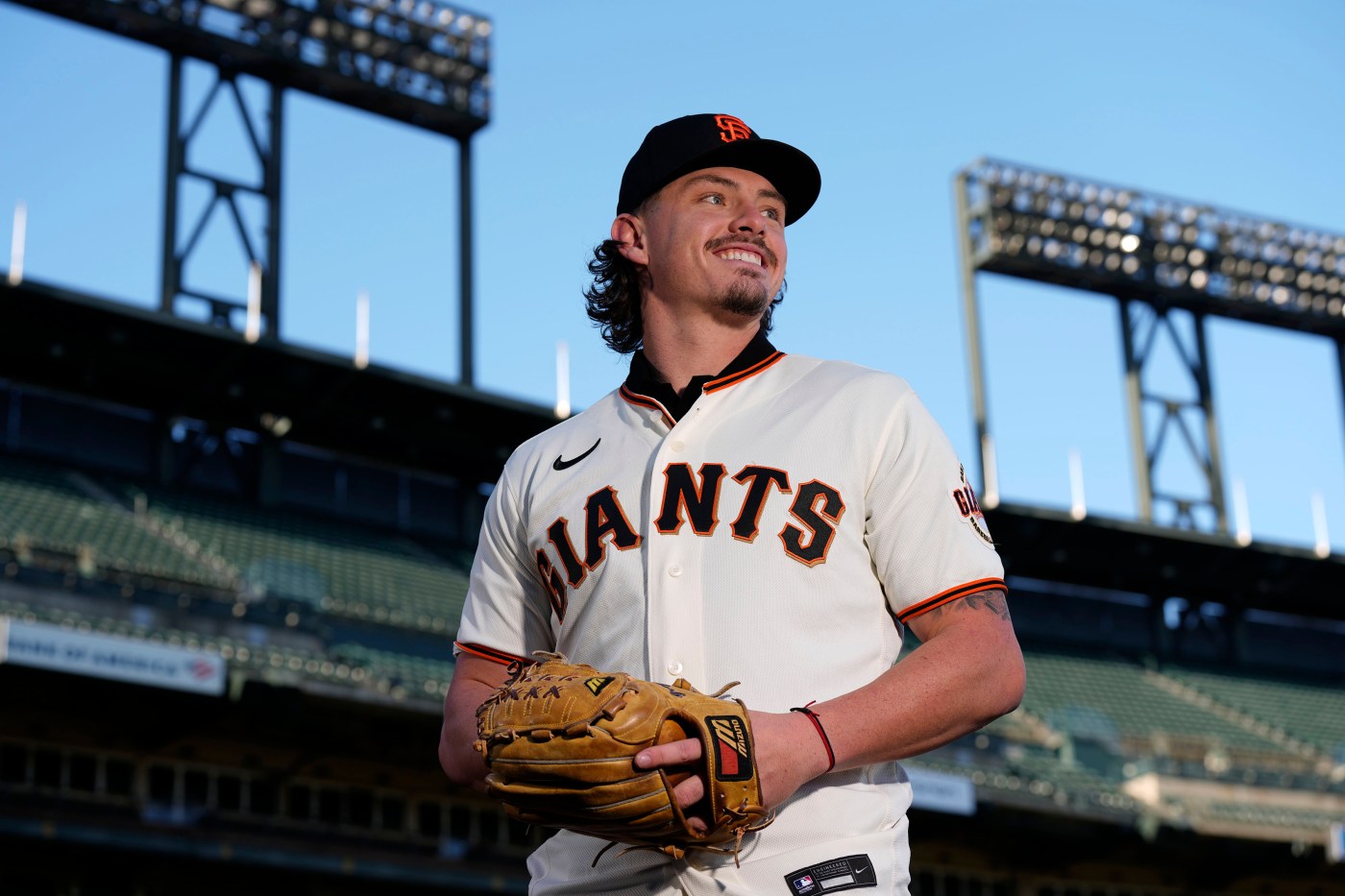
SAN FRANCISCO — When the Giants promoted top prospect Bryce Eldridge to Triple-A Sacramento last month, president of baseball operations Buster Posey made sure a less-heralded prospect received his just due.
“I do want to say Trent Harris, too, moving up to Triple-A is throwing the ball extremely well,” Posey said. “I would like, if you guys don’t mind, giving him a little bit of love.”
The love was well-warranted. And on Tuesday, Harris was selected to represent the Giants alongside left-hander Carson Whisenhunt at the 2025 Futures Game in Atlanta on Saturday.
Prior to his promotion to Sacramento, Harris posted a 1.69 ERA with 25 strikeouts over 16 innings (1.81 FIP). His performance with Double-A Richmond was a continuation of his excellence last season, a year where he had a 1.81 ERA with 105 strikeouts over 79 2/3 innings.
Harris initially struggled upon being promoted to Triple-A, allowing eight earned runs over his first three relief outings. Since then, the right-hander has a 3.48 ERA and 3.69 ERA over his last seven appearances with 14 strikeouts over 10 1/3 innings, respectable marks given the River Cats play in the hitter-friendly Pacific Coast League.
The 26-year-old Harris has a considerably different prospect profile compared to Eldridge. Unlike Eldridge, Harris wasn’t a first-rounder. He wasn’t selected in the second, third, fourth or fifth rounds either.
He wasn’t drafted at all.
Harris spent three years with High Point University of the Big South Conference (3.94 ERA) as a third baseman and reliever. After undergoing Tommy John surgery in 2021 he transferred to the University of North Carolina at Pembroke — a Division II school. He pitched well in his lone full season there, posting a 3.32 ERA over 62 1/3 innings with 69 strikeouts, but went undrafted due in part to being 24-years-old.
The right-hander continued pitching after the draft, posting a 0.30 ERA with 33 strikeouts over 29 2/3 innings and earning Pitcher of the Year honors in Coastal Plain League, a collegiate wood bat league based in the Carolinas, Georgia and Virginia. He drew the attention of the Giants and signed as a free agent for $10,000. So far, San Francisco’s investment is proving worthwhile.
“You see first-rounders get more of the benefit of the doubt,” Harris said. “Being an undrafted guy and a fifth-year senior, I try to go out there and compete the best I can and make a name for myself. … I always carry a chip on my shoulder to try to prove other people wrong.”
Said Richmond manager Dennis Pelfrey: “The whole organization loves what he brings to the table. He’s a worker a lot like Bryce Eldridge. He’s very competitive and wants to be the best at what he does.”
Harris may not have been drafted, but he’s enjoyed the advantage of having a father who pitched in the majors.
Greg W. Harris — not to be confused with Greg A. Harris, who played around the same time — pitched over eight major-league seasons, mostly with the Padres. In San Diego, Greg Harris had a 2.95 ERA over 673 1/3 innings as both a starter and reliever and finished seventh for the 1989 National League Rookie of the Year. Only Hall of Fame closer Trevor Hoffman (2.76) has a lower career ERA in Padres history.
“A bunch of lessons,” Harris said of his dad. “Playing the game the right way, always hustling on and off the field. That’s always been a big part of his passion, his way of playing. Pitching wise, it’s always get the ball out in front and spin it.”
The younger Harris’ repertoire currently features a four-seam fastball, curveball and slider, though he is currently working on a splitter that is still in the project phase. The right-hander’s fastball sits in the 95-97 range that can generate 17-to-18 inches of vertical movement, but the pitch plays up because it features the shape of a power cutter.
Related Articles
SF Giants’ walk-off Phillies on Bailey’s inside-the-park homer
Willie Mays’ trophies, World Series ring up for charity auction later this SF Giants season
How SF Giants’ Rodríguez turned new slider grip into first All-Star selection
SF Giants open big homestand with 3-1 win over Phillies
Texas flood: Bay Area couple and teen son among the missing
“I’ve never really understood why it’s always been like that,” Harris said of his fastball. “In college, I was honestly trying to take the cut out. As we got into pro ball, I saw the numbers play. It’s kind of a unicorn-esque pitch. It cuts a little bit — as much as (seven inches of gloveside movement) sometimes but I try to stay behind it so I can create the ride and movement as well with it. It’s neat to have a unique pitch.”
Along with the heater, Harris’ curveball features straight down movement around 78 mph and generates 2700-2800 RPMs, or revolutions per minute. Harris’ slider, a pitch that also gets labeled as a sweeper, features a mid-80s velocity and a similar spin rate to the curveball.
“Great breaking ball,” Posey said. “I think that pitch is most definitely plus, and just the ability to be in the zone, keep hitters off balance. The breaking ball is unique. Getting to look at it in person this spring, it definitely stood out.”